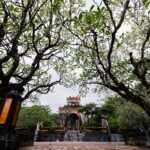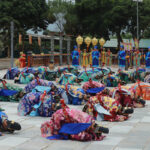Virtuous Empress Dowager, Mother of Emperor Tu Duc
As a young girl, she was renowned for her filial piety, intelligence, knowledge of history, virtue, and exceptional beauty. At the age of 12, when her mother fell gravely ill and preferred to be alone, she was the only one allowed to tend to her mother day and night. Even at such a young age, she observed the mourning rituals as an adult when her mother passed away, earning the admiration of those around her. Her reputation reached Empress Tran Thi Dang, mother of Emperor Minh Mang, who summoned her to the palace to attend to Crown Prince Nguyen Phuc Mien Tong, later Emperor Thieu Tri, at the age of 14.
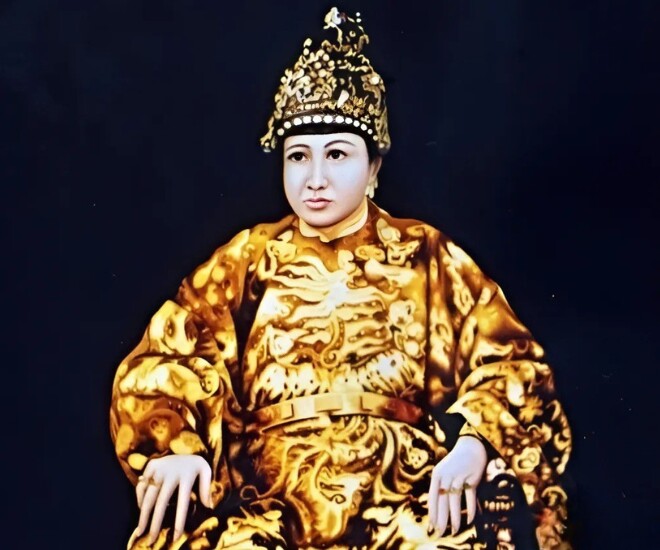
Upon Mien Tong’s ascension to the throne as Emperor Thieu Tri (reign: 1841-1847), she was bestowed the title of Tu Giai Luong Tranh and later elevated to Nhat Giai Luong Phi, one of the highest ranks in the Nguyen Dynasty’s harem at that time. (Illustrative image)
Pham Thi Hang was the mother of Crown Prince Hong Nhiem, who later ascended the throne as Emperor Tu Duc (reign: 1847-1883), one of the longest-reigning monarchs in Vietnamese history with 36 years on the throne. When Emperor Tu Duc took the throne, she was honored as the Empress Dowager and later the Grand Empress Dowager, also known as Tu Du Grand Empress Dowager, a title that celebrated her virtue, gentleness, and benevolence.
What sets Grand Empress Dowager Tu Du apart is her lack of involvement in politics and direct interference in court affairs, unlike some powerful figures in the historical Eastern harem. However, she wielded significant influence due to her moral authority, wisdom, and understanding of human nature. She often offered prudent and moderate advice, upholding the core Confucian values, which contributed to the stability of the harem and the preservation of the royal family’s dignity.
During the tumultuous political events of the Nguyen Dynasty after Emperor Tu Duc’s reign, such as the struggles for the throne among Emperors Duc Duc, Hiep Hoa, Kien Phuc, and Ham Nghi, she played a pivotal role in mediation and maintaining the legitimacy of the royal family.
Moreover, Grand Empress Dowager Tu Du is also recognized for her concern for the people’s welfare. During Emperor Tu Duc’s reign, she repeatedly advised the emperor to reduce taxes and provide relief during famines and floods. Even after the emperor’s passing and the country’s turmoil due to French colonial rule, she maintained her dignity, lived frugally, and valued endurance and virtue.
Grand Empress Dowager Tu Du lived to be 93 years old, passing away in 1902 during the reign of Emperor Thanh Thai. She was accorded a grand state funeral and buried at Xuong Tho Lang, the tomb of Emperor Tu Duc, which has been recognized by UNESCO as a World Cultural Heritage Site. Posterity honors her as a woman who made significant contributions to preserving the royal family’s traditions and the moral principles of the Nguyen Dynasty. Although she did not hold political power, her moral and spiritual influence permeated through multiple dynasties.
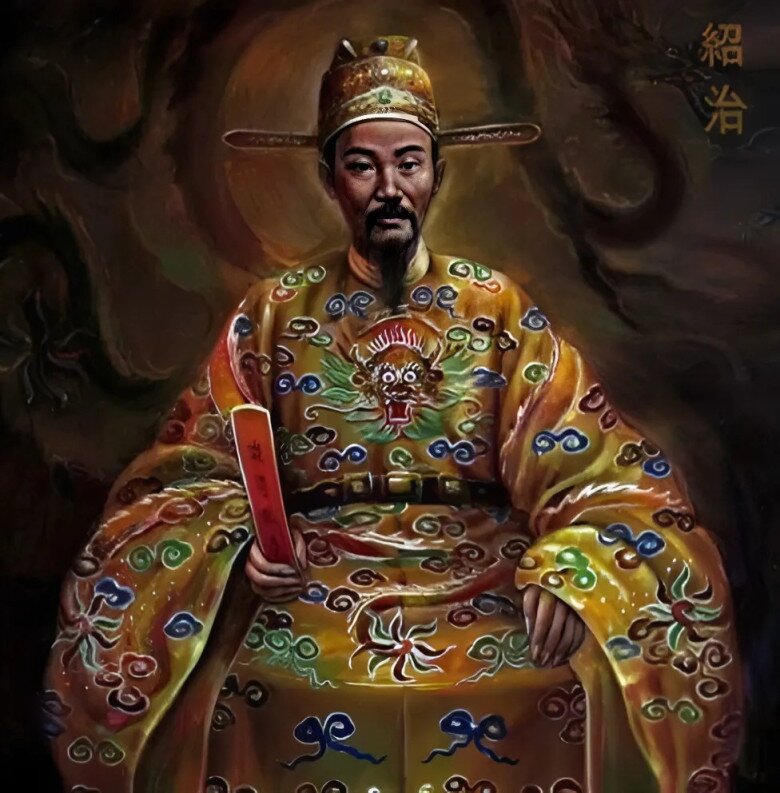
Her most notable descendant is Emperor Tu Duc, although she had no biological grandchildren. Nonetheless, Grand Empress Dowager Tu Du took on the responsibility of educating and nurturing the emperors who succeeded him, such as Duc Duc and Kien Phuc. (Illustrative image)
Undergoing Billion-Dong Restoration, Becoming a Popular Destination in Hue
The tomb of Grand Empress Dowager Tu Du, also known as Xuong Tho Lang, is nestled amidst a special-use coniferous forest on the southern bank of the Huong River in Cu Chanh Village, Thuy Bang Commune, Hue City. Recognized as a World Cultural Heritage Site by UNESCO, the tomb’s architecture reflects the grandeur of the Nguyen Dynasty, blending solemnity, tranquility, and the exquisite artistry characteristic of the Nguyen era.
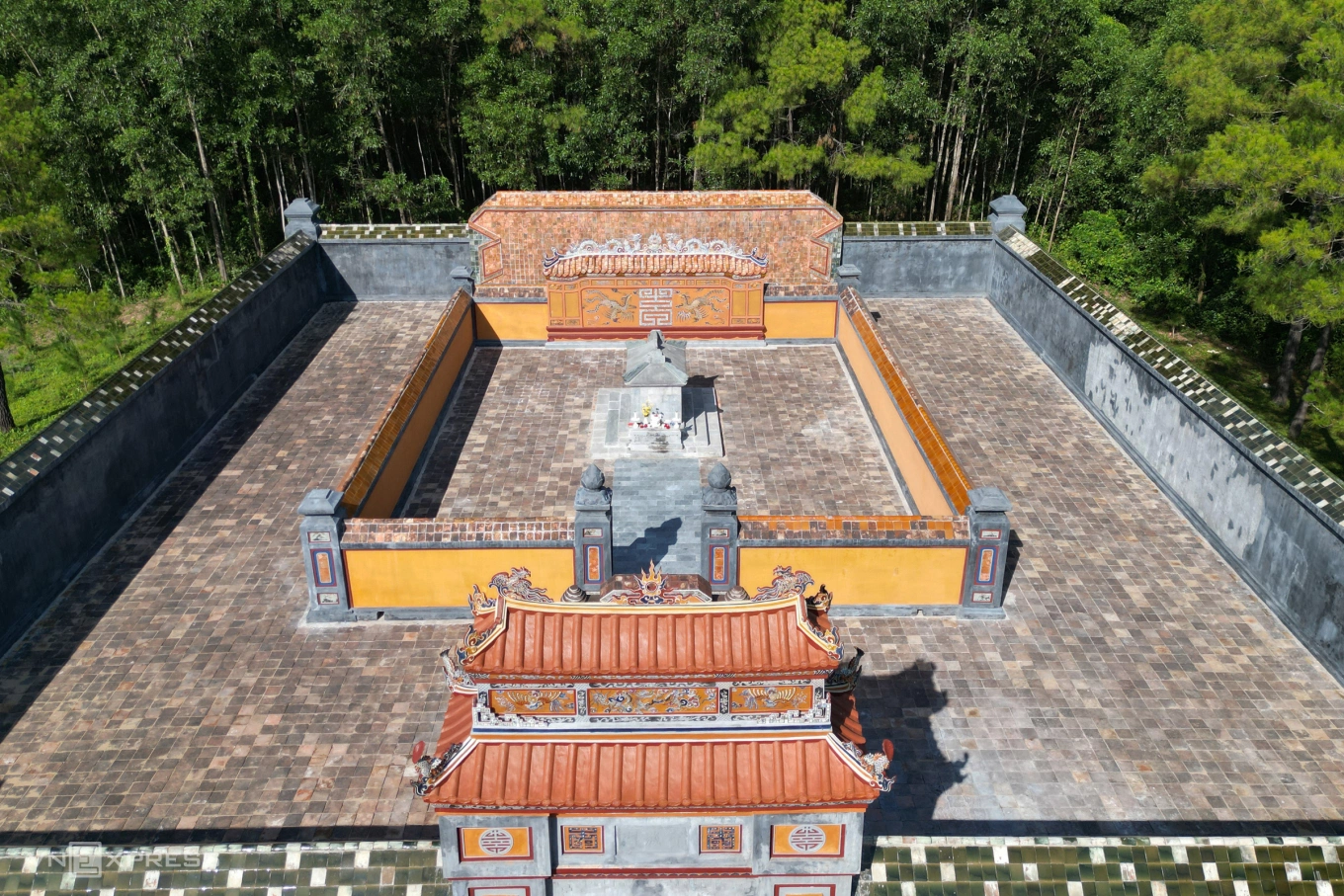
Constructed in the early 20th century within the overall landscape of Emperor Thieu Tri’s tomb, the tomb follows the layout of “inner viewing, outer guarding.” This architectural style was typical during the reign of the Nguyen Lords.
Despite surviving for over a century, the tomb of Empress Nghi Thien Chuong, also known as Tu Du, has endured the test of time remarkably well. However, the impact of historical events and the harsh natural environment (high temperatures, humidity, frequent rains) have taken their toll on the site.
Today, the restoration process has been completed, encompassing various elements: the pillar monument, the Tan Nguyet Lake and its associated drainage system, the courtyard, the steps leading to the tomb, the natural courtyard, the gate, the outer wall, and the inner wall.
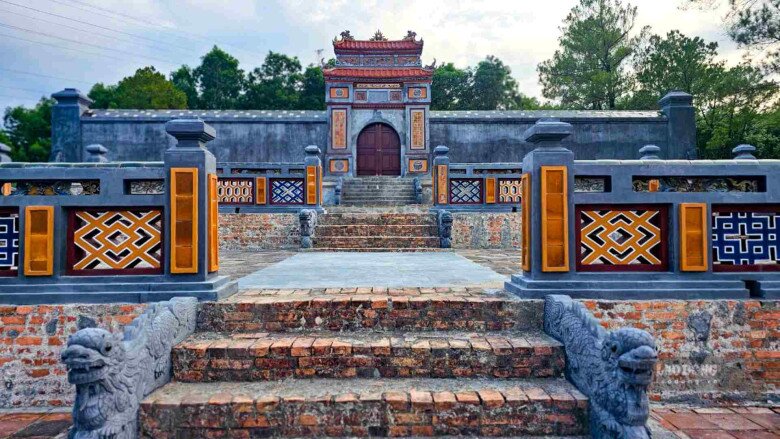
The tomb of Tu Du Grand Empress Dowager after the restoration.
Xuong Tho Lang’s structure is compact yet harmoniously integrated into its natural surroundings, embodying the “human-harmony-geography” philosophy of Asian feng shui. A spacious stone courtyard leads to the tomb, passing through a small traditional triple-arched gate. The surrounding walls, pillars, and stone steles are intricately carved with dragon and cloud motifs, symbolizing sacredness and longevity.
The tomb adheres to the traditional “front pond, back mountain” layout, with a lotus pond in the front and a hill serving as a backdrop, creating an auspicious feng shui setting. While not overly grandiose in scale, the tomb is exquisite in its details, from the carved pillars and yin-yang roof tiles to the Confucian inscriptions on stone screens, all contributing to a sense of solemnity and reverence.
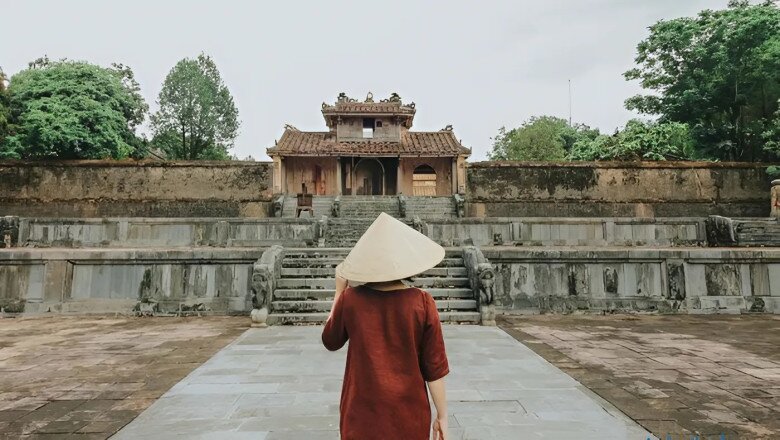
This is a popular check-in spot for visitors to the enchanting city of Hue.
One of the most captivating spots at Xuong Tho Lang is the ancient moss-covered stone path leading to the tomb, flanked by intricately carved columns. It has become a beloved backdrop for many visitors seeking to capture memorable moments.
The site is particularly enchanting during the early morning or at sunset, when the sunlight filters through the pine trees and gently illuminates the serene lake, creating a mystical atmosphere that seems to transport visitors back in time.
A visit to Xuong Tho Lang is not merely about admiring the architectural splendor but also about immersing oneself in history, experiencing the grandeur of the royal court, and finding moments of tranquility in the enchanting city of Hue.




























